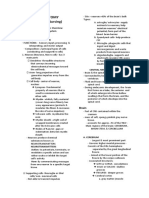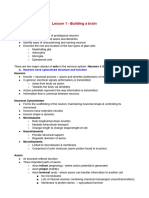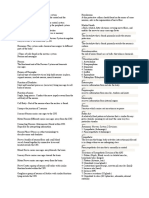0% found this document useful (0 votes)
11 views2 pagesNervous System Exam Notes
The document outlines the organization of the nervous system, detailing the Central Nervous System (CNS) and Peripheral Nervous System (PNS), including their components and functions. It describes neuron structure, types, associated glial cells, synapses, and neurotransmitters. Additionally, it covers the basic anatomy of the spinal cord, including its protective layers, cerebrospinal fluid, processing centers, sensory pathways, and reflex arcs.
Uploaded by
karimullah201Copyright
© © All Rights Reserved
We take content rights seriously. If you suspect this is your content, claim it here.
Available Formats
Download as PDF, TXT or read online on Scribd
0% found this document useful (0 votes)
11 views2 pagesNervous System Exam Notes
The document outlines the organization of the nervous system, detailing the Central Nervous System (CNS) and Peripheral Nervous System (PNS), including their components and functions. It describes neuron structure, types, associated glial cells, synapses, and neurotransmitters. Additionally, it covers the basic anatomy of the spinal cord, including its protective layers, cerebrospinal fluid, processing centers, sensory pathways, and reflex arcs.
Uploaded by
karimullah201Copyright
© © All Rights Reserved
We take content rights seriously. If you suspect this is your content, claim it here.
Available Formats
Download as PDF, TXT or read online on Scribd
/ 2


































































